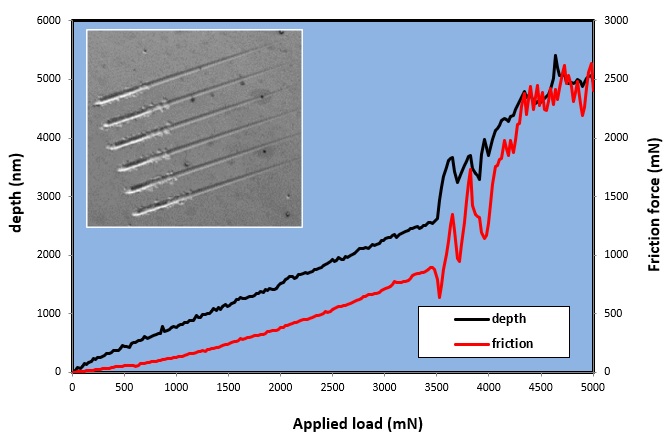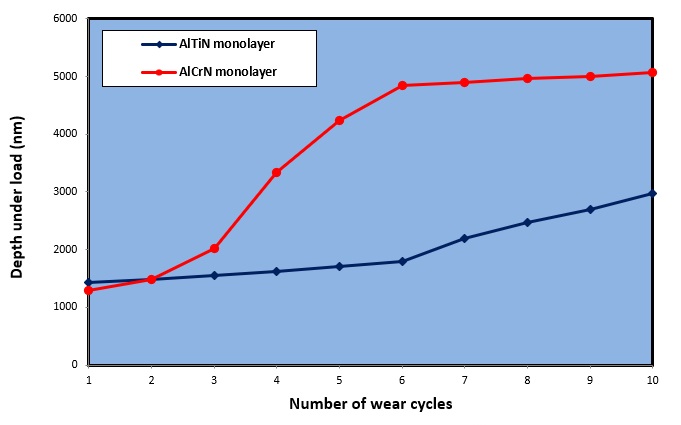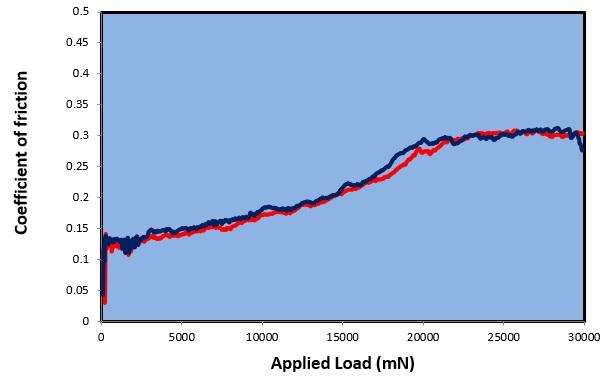The micro-scratch capability uses the high load head to perform depth-sensing scratch tests up to 30 N normal load.
Testing mechanical and tribological properties at the correct length scale provides more relevant data e.g. for optimising coating composition for improved performance in demanding applications such as cutting tools or in mechanical contact in aero/auto engines. Although popular for their simplicity, many macro-scale mechanical contact tests are less sensitive to the properties of thin CVD and PVD coatings as the large probe radius and very high contact forces in the test result in peak stresses far into the substrate. Conversely, nano-scratch tests using much lower loads and smaller probe radii may position peak stresses too close to the surface for coatings that are several microns thick. Additionally, high surface roughness can limit the life of small-radius scratch probes.
By performing micro-scratch tests, larger loads and blunter probe geometries when compared to nano-scratch testing enable the peak stresses to be positioned closer to the interface of micron-scale CVD and PVD coatings so that the full coating-substrate system behaviour can be evaluated.
Benefits of micro-scratch testing on the NanoTest:
- High friction sensitivity
- High lateral rigidity for reliable micro-scratch tests
- Wide load range for single and multi-pass tests
- Exceptional thermal stability for wear testing
- Advanced software for yield stress measurement
- Compatible with high temperature capability
- Fully compliant with all relevant standards for micro-scratch




